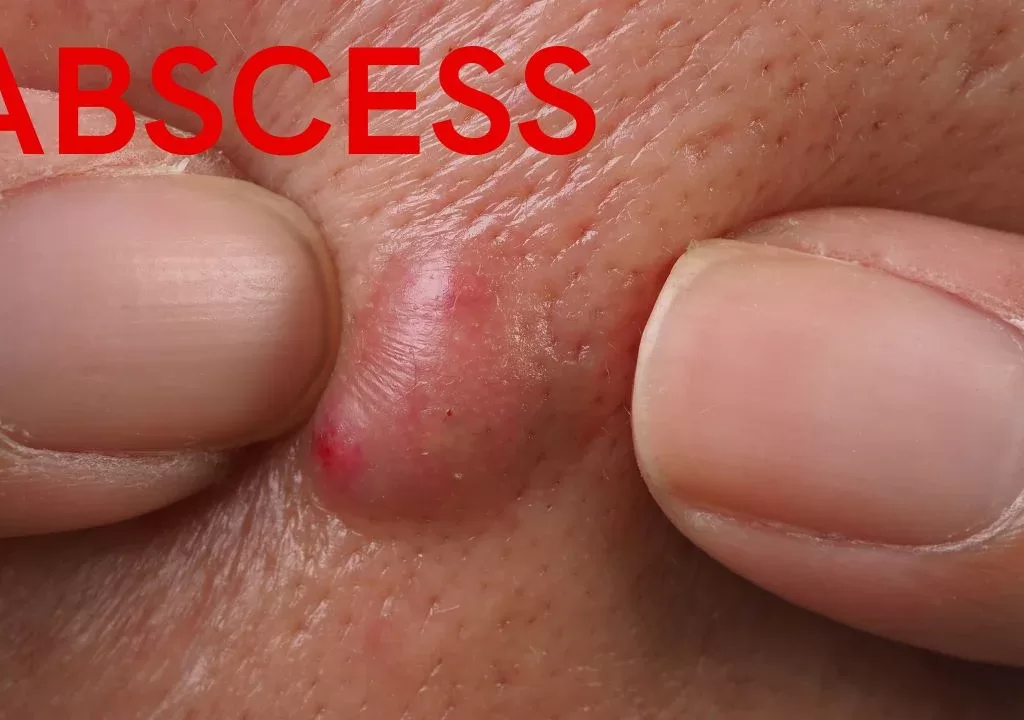An abscess is a painful, pus-filled infection typically caused by bacteria. This localized collection of pus can occur in various parts of the body, often presenting as a swollen, red, and tender area. Understanding the causes, symptoms, and treatments of abcesses can help in early recognition and effective management.
What is an Abscess?
An abscess is a pocket of pus that forms due to an infection. Pus is a thick fluid containing white blood cells, dead tissue, and bacteria. Abcesses can develop anywhere in the body but are most commonly found on the skin’s surface, in the armpits, or in the mouth.
Causes
Symptoms
The symptoms of an abscess can vary depending on its location, but common signs and symptoms include:
- Localized Symptoms:
- Swelling: A noticeable lump or bump in the affected area.
- Pain: The area may be tender and painful to touch.
- Redness: The skin over the abcess may appear red and inflamed.
- Warmth: The affected area may feel warm to the touch.
- Pus: A pocket of pus may be visible, and in some cases, it may drain out.
- Skin changes: The skin over the abscess may become tight and shiny.
- Systemic Symptoms (more common with severe or untreated abcesses):
- Fever: A sign that the infection may be spreading.
- Chills: Accompanying the fever, indicating a more systemic infection.
- Malaise: A general feeling of being unwell.
- Fatigue: Feeling unusually tired or weak.
- Sweating: Night sweats or increased sweating.
- Loss of appetite: Reduced desire to eat.
- Symptoms Specific to Location:
- Skin abscess: Visible lump with possible drainage.
- Dental abscess: Severe toothache, sensitivity to hot and cold, swelling in the face or cheek.
- Internal abscess (e.g., abdominal): Pain in the affected area, nausea, vomiting, abdominal swelling, and difficulty breathing if the abscess is large.
If you suspect an abscess, especially if accompanied by systemic symptoms, it’s important to seek medical attention for proper diagnosis and treatment.
Psoas abscess
Diagnosis
Diagnosing an abscess typically involves a combination of medical history, physical examination, and diagnostic tests. Here are the common steps in diagnosing an abcess:
- Medical History:
- The doctor will ask about symptoms, their duration, and any relevant medical history, including recent infections, surgeries, or injuries.
- Physical Examination:
- The affected area will be examined for signs of swelling, redness, warmth, and tenderness.
- In cases of visible abscesses, the doctor may inspect for pus and other signs of infection.
- Imaging Tests (for deeper or less accessible abcesses):
- Ultrasound: Helps identify fluid-filled cavities and guide drainage procedures.
- CT Scan (Computed Tomography): Provides detailed images of internal organs and can locate abcesses deep within the body.
- MRI (Magnetic Resonance Imaging): Offers detailed images, especially useful for abcesses in soft tissues and organs.
- X-ray: Sometimes used to identify abcesses associated with dental issues or to rule out other conditions.
- Laboratory Tests:
- Blood Tests: Can show signs of infection, such as elevated white blood cell counts and markers of inflammation.
- Pus Sample: If pus is draining or can be aspirated, it may be sent for culture and sensitivity testing to identify the causative bacteria and determine the most effective antibiotics.
- Aspiration and Biopsy:
- For some abcesses, a needle may be used to aspirate fluid from the abscess for analysis.
- A biopsy may be performed if there’s a need to rule out other conditions, such as tumors.
- Specialized Tests:
- Depending on the location and suspected cause, additional tests like endoscopy or colonoscopy might be used to examine internal organs and tissues.
Accurate diagnosis is essential to determine the appropriate treatment, which often includes antibiotics and drainage of the abcess.
Treatment of Abscesses
Smaller abscesses may be managed at home with proper care. This includes:
- Warm Compresses: Applying a warm, damp cloth to the abcess can help reduce pain and promote drainage.
- Proper Hygiene: Keeping the area clean and avoiding squeezing or popping the abcess can prevent further infection.
- Over-the-Counter Pain Relievers: Medications like ibuprofen or acetaminophen can help manage pain and reduce inflammation.
Prevention
Preventing abscesses involves taking steps to reduce the risk of infection:
- Maintain Good Hygiene: Regular handwashing and proper wound care can help prevent infections.
- Avoid Sharing Personal Items: Items like towels, razors, and clothing can spread bacteria.
- Stay Healthy: Maintaining a healthy immune system through a balanced diet, regular exercise, and adequate sleep can reduce the risk of infections.
When to Seek Medical Attention
While many abscesses can be managed at home, it is essential to seek medical attention if:
- The abscess is large or rapidly increasing in size.
- There is significant pain or fever.
- Red streaks are spreading from the abscess, indicating a potential spread of infection.
- The abcess does not improve with home care or recurs frequently.
Conclusion
Abscesses are common infections that can cause significant discomfort if left untreated. By understanding their causes, symptoms, and treatment options, you can take proactive steps to manage and prevent abcesses effectively. Always consult a healthcare professional for proper diagnosis and treatment if you suspect an abcess.
Disclaimer: This information provides a general overview of diagnosis, treatment, and medication related to alopecia areata. It is intended to assist in understanding potential options but is not comprehensive. This content is not a substitute for professional medical advice, diagnosis, or treatment. It does not cover all possible conditions, treatments, side effects, or risks specific to individual cases. For personalized medical advice, please consult a healthcare provider who can evaluate your unique circumstances. This information does not endorse or validate any specific treatments or medications.
